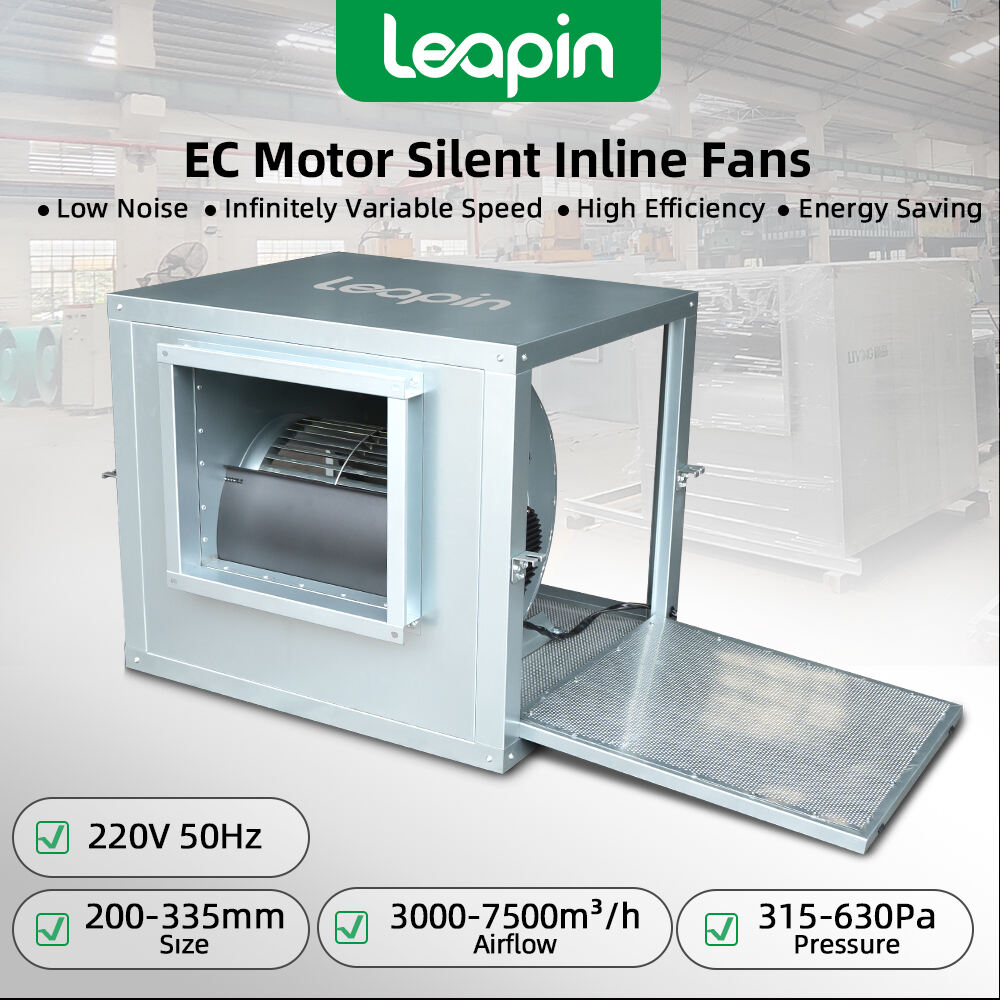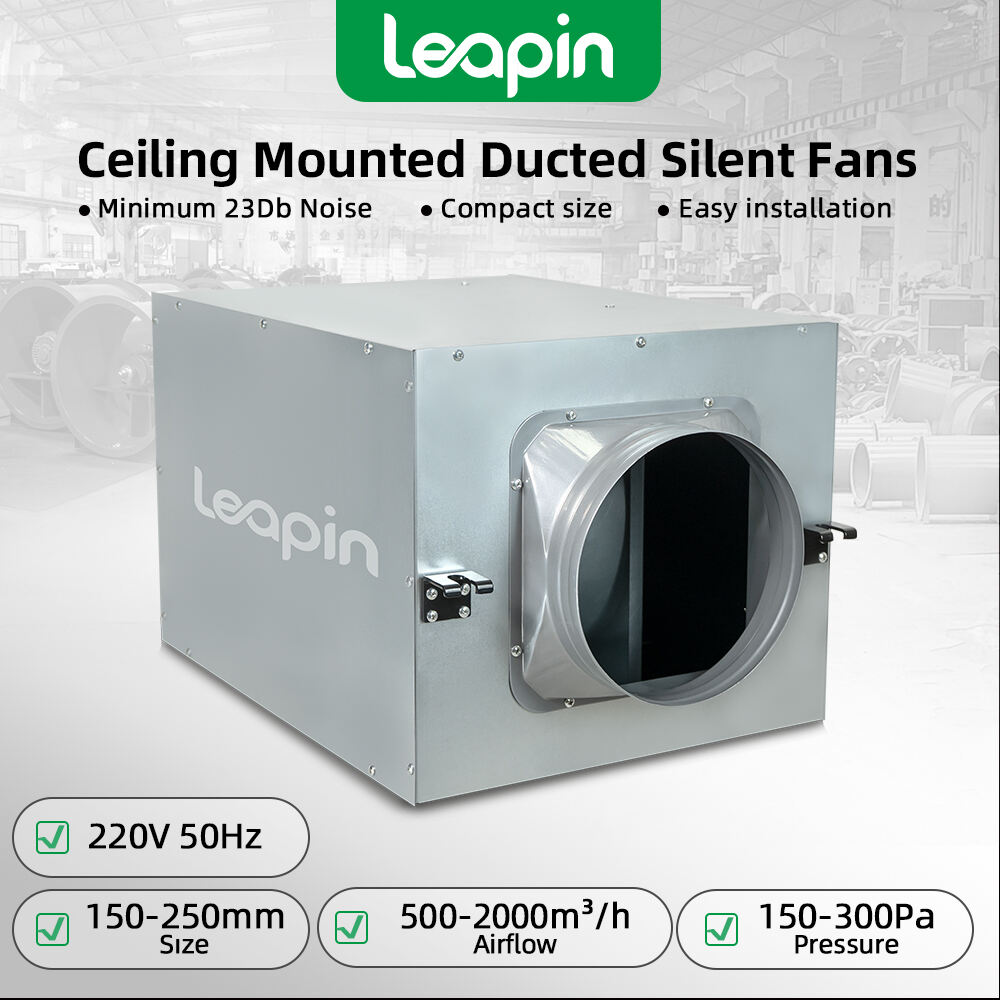Inline Centrifugal Fans: Enhancing Air Circulation in Ductwork Systems
Core Components and Design Features
Inline centrifugal fans are essential for optimal air management within duct systems, and their performance hinges on several critical components including impellers, housings, and motors. These components work in harmony to ensure efficient airflow while minimizing energy consumption. The design features, such as the contour of the impeller and housing, are meticulously engineered to maximize airflow and reduce turbulence. This streamlined design enhances the fan's efficacy, allowing for smooth and uninterrupted movement of air through duct systems.
In addition to design aspects, the materials used for constructing inline centrifugal fans significantly impact their durability and operational lifespan. Utilizing corrosion-resistant metals ensures that these fans withstand harsh conditions, maintaining efficiency and reliability over time. This focus on materials not only enhances durability but also reduces maintenance costs, offering long-term savings to industrial users.
Centrifugal vs. Axial: Choosing the Right Fan Type
When selecting the appropriate fan type for your specific industrial needs, understanding the differences between centrifugal and axial fans is crucial. Centrifugal fans operate by drawing air into a wheel and expelling it at a perpendicular angle, boosting airflow in duct systems requiring high-pressure environments. On the contrary, axial fans are best suited for low-pressure applications where large volumes of air need to be moved swiftly — ideal for tasks demanding high-flow rates but minimal resistance.
In practical scenarios, centrifugal fans prove advantageous for applications such as inline fan systems in industrial settings or large warehouses where robust airflow is necessary. Meanwhile, user testimonials often highlight axial fans for use in environments where quieter, space-saving room ventilation is needed. Industry experts recommend evaluating the specific needs of your space and requirements, ensuring the fan type chosen aligns with the intended application for optimal performance and efficiency.
Advantages of Industrial-Grade Inline Centrifugal Fans
High-Efficiency Performance for Energy Savings
Industrial-grade inline centrifugal fans are engineered to prioritize high-efficiency performance, offering substantial energy savings compared to traditional fan models. These fans utilize advanced design and cutting-edge technology to minimize energy consumption while maximizing airflow. For instance, their aerodynamic structures reduce drag and resistance, ensuring smoother airflow and lower energy expenditure. Statistics from the U.S. Department of Energy indicate that high-efficiency fans can yield energy savings of up to 30% in industrial settings, showcasing their effectiveness. Over time, these energy savings translate into significant financial benefits, as reduced consumption leads to lower operational costs, making inline centrifugal fans a smart investment for businesses.
Noise Reduction Technology in Modern Industrial Fans
Modern industrial-grade inline centrifugal fans come equipped with noise reduction technology that substantially decreases operational noise levels, enhancing workplace comfort. Innovations such as acoustically treated housings and optimized airflow patterns are fundamental in achieving quieter fan operations. These features work by minimizing turbulence and vibration, which are primary sources of noise in fan systems. Research from occupational safety and health studies highlights the impact of noise on worker productivity and stress levels, underscoring the importance of quieter working environments. By incorporating advanced noise reduction technologies, modern fans mitigate these concerns, fostering a more conducive atmosphere for employees.
Compact Designs for Space-Constrained Installations
The compact designs of modern inline centrifugal fans are particularly advantageous for space-constrained installations without sacrificing performance. These fans are meticulously crafted to fit into tight areas, making them ideal for urban or industrial environments where space is limited. For instance, inline centrifugal fans can be effectively integrated into existing duct systems without extensive modifications. The importance of compact design is evident in industries like manufacturing and warehousing, where spatial efficiency is crucial. Successful installations in these settings demonstrate how compact fans offer solutions to space constraints, enabling businesses to optimize their environments and maintain efficient air management.
Industrial Applications of Inline Centrifugal Fans
Warehouse Ventilation Solutions
Inline centrifugal fans are essential for ventilating large warehouse spaces, ensuring optimal airflow and temperature control. These fans help maintain a consistent environment by efficiently circulating air and reducing humidity levels, which is crucial in expansive areas like warehouses. Several case studies have highlighted successful implementations where fans have significantly enhanced worker comfort and efficiency. For example, one warehouse integrated inline centrifugal fans to improve airflow management, resulting in better temperature control and a more comfortable working environment for employees. Proper fan selection is critical in maintaining air quality in warehouse environments as it prevents the buildup of dust and pollutants, safeguarding both products and personnel.
HVAC System Enhancements
Inline centrifugal fans play a vital role in complementing HVAC systems, boosting overall performance and efficiency. By incorporating these fans, HVAC systems can achieve better airflow distribution, reducing energy consumption and enhancing cooling and heating capabilities. In fact, data shows considerable improvements in HVAC efficiency attributed to the integration of inline fans, as these components optimize the system's operational benefits. Different configurations for integrating fans into existing setups, such as direct coupling with ductwork or standalone units, provide flexibility to suit varied applications and ensure seamless air conditioning support.
Manufacturing Facility Air Quality Management
The role of inline centrifugal fans in maintaining air quality within manufacturing facilities is critical, as they help control dust, particulates, and fumes effectively. This air management is vital for meeting regulations and standards that necessitate effective air quality management in industrial settings. For instance, guidelines from entities such as OSHA outline the importance of controlling particulate matter in the air to protect workers. Many facility managers testify to the noticeable improvements in air quality after implementing these fan systems, noting enhanced particulate control and fewer airborne contaminants, which leads to a safer and more compliant working environment.
Top Inline Centrifugal Fan Solutions for Ductwork Systems
EC Motor Silent Inline Fans CDC-E Series
The EC Motor Silent Inline Fans CDC-E Series stand out for their remarkable energy efficiency and quiet operation, making them ideal for environments that demand minimal noise disturbance such as laboratories and hospitals. Advanced EC motor technology is integrated into these fans, enabling stepless speed regulation and achieving over 90% efficiency—significantly cutting down on energy consumption and operational costs. User feedback consistently praises this series for its exceptional performance across various industrial applications. With a compact design and high efficiency, the CDC-E Series is a top choice for ductwork solutions.
Duct Silent Cabinet Box Inline Fans DPT Series
The DPT Series Duct Silent Cabinet Box Inline Fans excel in their compact design and installation versatility, suitable for spaces where noise reduction and efficient airflow are paramount. Featuring a dual-suction and direct-coupled motor structure, these fans maintain optimal ventilation and air exchange in environments like homes and offices with stringent noise requirements. Their straight-through duct design caters to long-distance air supply needs, enhancing airflow efficiency while minimizing noise pollution. Compared to similar products, the DPT Series offers superior performance, backed by user feedback that highlights its reliability and effectiveness in duct systems.
Optimizing Performance and Longevity
Proper Installation Techniques for Maximum Efficiency
Ensuring optimal functionality and longevity of inline centrifugal fans begins with proper installation techniques. One crucial aspect is selecting the correct duct sizing for your fan as it directly affects airflow efficiency and overall performance. Proper placement of the fan within the duct system is equally essential to avoid unnecessary bends and obstructions. A step-by-step installation guide should be followed, starting from mounting the fan securely, connecting it to the power supply, and verifying all components are set correctly. Common pitfalls include incorrect duct attachment and inadequate sealing, which may result in airflow leaks and decreased operational efficiency. If not installed properly, fans can experience increased strain and wear, leading to frequent breakdowns. This can ultimately reduce the lifespan of the equipment and escalate maintenance costs.
Routine Maintenance Protocols for Industrial Fans
Implementing routine maintenance protocols is vital for preserving the performance of industrial fans. An effective maintenance schedule should include regular inspections and cleaning procedures. Consistently checking for dirt buildup, loose connections, and worn components can prevent significant issues. Without adequate maintenance, fans may suffer from reduced airflow, mechanical failures, and increased energy consumption. This neglect not only jeopardizes the efficiency of fan operations but can also halt industrial processes, affecting productivity. To maintain fans safely and efficiently, it's important to use the right tools, wear protective gear, and follow the manufacturer's instructions. Simple tasks like lubricating bearings, tightening screws, and replacing filters can be performed to extend the life and performance of these critical industrial components.

 EN
EN
 AR
AR
 FR
FR
 RU
RU
 ES
ES
 TL
TL
 ID
ID
 VI
VI
 TH
TH
 MS
MS
 BN
BN



